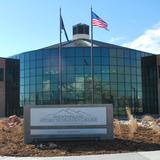- With thousands of graduates along the Wasatch Front, Provo College is committed to career education in Utah. Our mission is to help committed students attain rewarding careers through student-centered training and education of the highest quality. Were accomplishing this mission by teaching the skills that apply directly to the marketplace and that employers want to hire. In todays job market, college graduates with career specific skills are in demand. Provo Colleges programs are developed with industry professionals who assist us with curriculum development and also recruit our graduates. Youll receive hands-on learning in the classroom that proves your skills and reduces the need for on-the-job training.
- Degrees and diplomas that get noticed. Flexible courses that work with your schedule. Accelerated programs so you finish faster. These are things our students love about Provo College. Youll gain real-world experience both in the classroom and through externships at top-notch firms that can evolve into full-time positions. Youll learn from experienced faculty to enter the workforce with confidence.
School Highlights
Provo College serves 897 students (100% of students are full-time).
The college's student-teacher ratio of 17:1 is higher than the state community college average of 16:1.
Minority enrollment is 29% of the student body (majority Hispanic), which is equal to the state average of 29%.
Quick Facts (2025-26)
- Enrollment: 897 students
- Private-state tuition: $14,880
- Acceptance Rate: 85%
- Student-teacher ratio: 17:1
- Minority enrollment: 29%
- Source: Integrated Postsecondary Education Data System (IPEDS)
Top Rankings
Provo College ranks among the top 20% of public schools in Utah for:
Category
Attribute
School Resources
School Overview
The teacher population of 53 teachers has stayed relatively flat over five years.
Provo College
(UT) Community College Avg.
Carnegie Classification
Special Focus Four-Year: Other Health Professions Schools
Not applicable, not in Carnegie universe (not accredited or nondegree-granting)
Institution Level
Four or more years
Four or more years
Institution Control
Private for-profit
Public
Total Faculty
53 staff
215 staff
School Calendar
Student Body
The student population of Provo College has grown by 117% over five years.
The student-teacher ratio of 17:1 has increased from 11:1 over five years.
The Provo College diversity score of 0.47 is equal to the state average of 0.47. The school's diversity has grown by 27% over five years.
Total Enrollment
897 students
4,285 students
Student-Teacher Ratio
17:1
16:1
# Full-Time Students
897 students
891 students
# Part-Time Students
117 students
3,394 students
# Enrollment Undergraduate
897 students
367 students
# Full-Time Undergraduate Students
897 students
891 students
# Full-Time Graduate Students
n/a
133 students
# Part-Time Undergraduate Students
117 students
3,394 students
# Part-Time Graduate Students
n/a
563 students
Total Dormitory Capacity
n/a
750 students
% American Indian/Alaskan
1%
1%
% Asian
2%
2%
% Hispanic
13%
13%
% Black
1%
1%
% White
71%
71%
% Hawaiian
1%
1%
% Two or more races
3%
3%
% Non Resident races
n/a
4%
% Unknown races
7%
4%
Diversity Score
0.47
0.47
College Completion Rate (Students who graduate in less than 4 years)
55%
55%
College Completion Rate (Students who graduate in 4 years or more than 4 years)
51%
47%
Average Graduate Earnings (10 Years)
$25,200
$32,700
Tuition and Acceptance Rate
The private state tuition of $14,880 is more than the state average of $13,766. The private state tuition has stayed relatively flat over four years.
Private State Tuition Fees
$14,880
$13,766
% Students Receiving Some Financial Aid
100%
73%
Median Debt for Graduates
$37,000
$15,108
Median Debt for Dropouts
$6,334
$6,334
Acceptance Rate
85%
93%
SAT Reading
n/a
545
SAT Math
n/a
550
ACT Composite
n/a
23
ACT English
n/a
24
ACT Math
n/a
23
Source: 2024 (or latest year available) Integrated Postsecondary Education Data System (IPEDS) , School Administrators
School Notes
- Associate of Science in Business Administration
- Bachelor of Science in Business Administration
- Bachelor of Science in Criminal Justice
- Diploma in Criminal Justice
- Associate of Science in Dental Assisting
- Diploma in Dental Assisting
- Bachelor of Science in Healthcare Administration
- Associate of Science in Medical Assisting
- Diploma in Medical Assisting
- Associate of Science in Medical Billing and Coding
- Diploma in Medical Billing and Coding
- Bachelor of Science in Nursing
- Bachelor of Science in Nursing (RN to BSN)
- Bachelor of Science in Paralegal Studies
- Associate of Science in Paralegal Studies
- Associate of Science in Personal Fitness Training
- Diploma in Personal Fitness Training
- Bachelor of Science in Physical Therapist Assistant
- Associate of Science in Physical Therapist Assistant
- Diploma in Massage Therapy
Frequently Asked Questions
How much does Provo College cost?
Provo College's private state tuition is approximately $14,880.
What is the acceptance rate of Provo College?
The acceptance rate of Provo College is 85%, which is lower than the state average of 93%.
What is Provo College's ranking?
Provo College ranks among the top 20% of community college in Utah for: Percent of students receiving financial aid.
In what neighborhood is Provo College located?
Provo College is located in the Rivergrove neighborhood of Provo, UT.
Recent Articles

Community College Success Rates 2025: Outcomes & Trends
Updated 2025 analysis of community college success rates, completion, transfer, costs, enrollment, and strategies that shape student outcomes.

Community Colleges in 2025: Combating Stereotypes with Impact
Updated insights on how community colleges are dispelling myths, growing enrollment, and expanding pathways in 2025.

2025 FAFSA Changes Explained for Community College Students
A comprehensive guide to 2025 FAFSA changes, what community college students must know, new eligibility rules, timelines, and tips to maximize federal aid.










